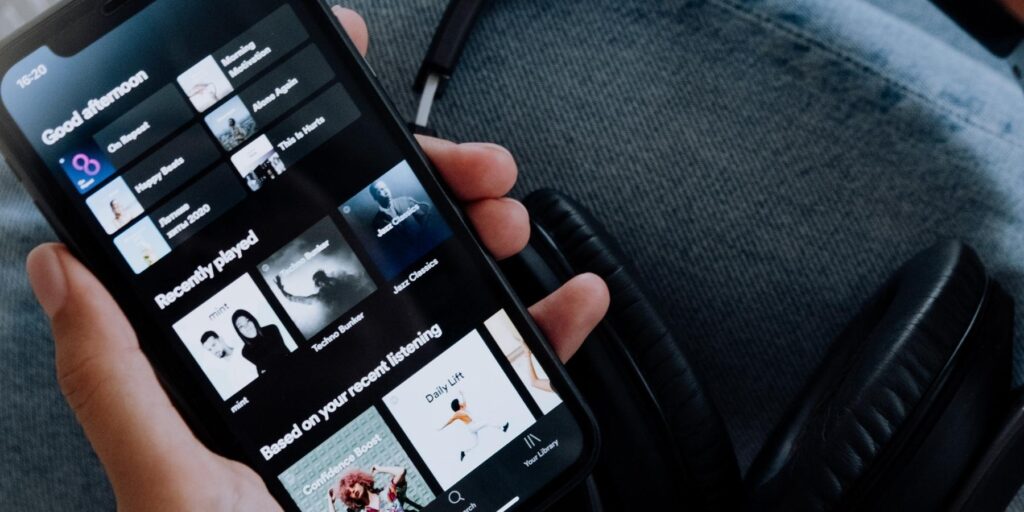How to do In-App Advertising: Everything you need to master mobile ads in 2022
Mobile advertising spending reached a record-breaking $223 billion worldwide in 2020, and this figure is projected to surpass $339 billion by 2023. Moreover, mobile makes up 60% of all digital advertising. With the majority of apps in the app store using a freemium model, it is important to know how to effectively monetize your mobile app with in-app advertising. In this guide, we cover everything you need to know about how to do in-app advertising.
How to do in-app advertising: What is in-app advertising?
In-app advertising is the practice of buying and selling ad space in a mobile app. This is a way developers can monetize their app. These ads are served through a mobile ad network, which connects developers and advertisers.
With advances in mobile technology and mobile app development, in-app ads have also developed over the years. In addition to traditional ad formats such as banner ads, advertisers can also engage users with video ads, rewarded ads and native advertising.
When implementing in-app advertising, it is important to consider how this affects the user experience. For example, a mobile game developer will want to serve ads at opportune moments within their game’s experience. Showing an ad half-way through a level may be disruptive to the user.
However, serving a rewarded video ad (where users can be rewarded with in-game currency for watching an ad in full) can engage the user and improve the user experience. In this example, placement, timing and ad format have been carefully considered for optimal engagement and revenue.
How to do in-app advertising: How it works
When learning how to do in-app advertising, it is important to learn the different players that make up the ecosystem. In-app advertising involves four players that you need to know. They are either on the buy side (purchasing ads) or sell side (offering ad space) of the ecosystem.
The exception is Mobile Measurement Partners (MMPs), which do not belong to either the buy or sell side. These are independent platforms that can be used to identify high-value users and develop your overall strategy.
- Advertisers: This is a player with a marketing strategy, a product or brand to sell. The advertiser buys advertising space to place their ad creative.
- App publishers: This is the mobile app developers with ad space that can be used to serve ads. The publisher can integrate a mediation platform and ad networks using an SDK (Software Development Kit).
- Networks: This is a company that connects advertisers’ demand with publishers’ supply. When an app publisher wants to display in-app ads, they can work with ad networks to identify the highest bidding advertiser.
What is an ad exchange?
Another important component is the ad exchange. This is a platform that is used for buying and selling ad space. Advertisers can choose their target audience and set rules on how much they would like to bid for that traffic.
What is a Demand Side Platform (DSP)?
The Demand Side Platform (DSP) is a platform that enables users to access inventory of several ad exchanges.
What is a Supply Side Platform (SSP)?
The Supply Side Platform (SSP) is a platform that enables publishers to serve ads to their audience.
What is programmatic media buying?
Programmatic media buying has also changed the industry by enabling advertisers and publishers to complete real-time bidding. This automates the buying process based on predefined rules to increase the efficiency of in-app advertising in several ways.
Why is in-app advertising important?
An important step when learning how to do in-app advertising is to define the monetization method’s importance – and there are several reasons in-app advertising is a critical component of the mobile ecosystem. The App Store has 1.96 million apps available for download, while there are 2.87 million apps available for download on the Google Play Store. 97% of apps in the Google Play app store are free to install, compared to 93.7% in the App Store. These apps can drive installs by offering a free experience while monetizing their mobile app with ads.
The critical benefits of in-app advertising can be broken down into three components.
- High engagement, sessions and user activity: For advertisers, in-app advertising is important because of the enormous reach and time users spend in-app. 90% of the average user’s time spent on a mobile device is spent in apps, with only 10% spent browsing the internet. For social media alone, the average daily time per user is 2 hours and 27 minutes. This activity can be leveraged for advertising opportunities and growth.
- Geotargeting Capabilities: Advertising on mobile apps means you can also leverage geotargeting capabilities. This is the practice of using location data to create hyper-relevant targeted ads. The geotargeting capabilities of mobile outweigh what is possible with desktop.
- Innovative ad formats: Mobile app advertising offers advertisers several opportunities to leverage innovative ad formats such as rewarded video ads and native advertising.
How to do in-app advertising: Freemium apps as a monetization model
The freemium model is a monetization strategy that enables users to download your mobile app for free – ensuring that you can compete against other apps that are free to install. You can then monetize your app in several ways. Firstly, users can be served in-app ads. Secondly, you can offer a premium ad-free subscription service with additional features.

This freemium model is used for several verticals. Popular examples include dating app Tinder and music streaming service Spotify – both of which are free to install but offer paid subscription services with a superior offering.
It is important to continually test and optimize your freemium model for best results. For example, the types of ads that benefit the user experience and which features should be included in your paid and free packages. You should optimize your monetization strategy over time to acquire users, retain them for longer and ensure they are contributing to increased revenue.
How to do in-App advertising: 4 Ad formats
There are many different ad formats to choose between when learning how to do in-app advertising. Here are some of the most popular options that you can leverage to reach your marketing goals:
- Banner ads: This is a traditional format that displays a banner on a user’s screen that displays your ad.
- Interstitial ads: This type of ad is similar to a banner ad, but it can expand to take up a user’s full screen.
- Video ads: This is an ad format that uses video. It is known for high engagement rates in comparison to banner ads.
- Rewarded video ads: This is an ad format that combines rich media (such as video) with a user incentive. For example, a user can gain upgrades and in-game currency in exchange for watching a video ad.
- Native ads: This is an ad format designed to match the look and feel of the rest of the mobile app’s experience.
Many mobile marketers will develop a mixed strategy that uses several formats. You should also test the efficacy of different ad formats and optimize your strategy over time.
Conclusion
With mobile ad spend expected to reach $339 billion by 2023, it is important for advertisers to learn how to do in-app advertising. This is the practice of buying and selling ad space in a mobile app. It involves advertisers (who want to advertise their product or brand), publishers (with in-app ad space) and networks (to connect advertisers with publishers).
The vast majority (96%) of mobile app developers offer their app as free-to-install in the App Store, so in-app advertising is a critical monetization model for many developers worldwide. The critical benefits of in-app advertising include high engagement, geolocation targeting and a choice between several innovative ad formats.
Some of the most popular in-app advertising formats include banner ads, interstitial ads, native ads, video ads and rewarded video ads.If you found this guide for how to do in-app advertising useful, you may also be interested in the 4 trends in Mobile OEM marketing for 2022 that should be on every marketer’s radar.
About the Author






